DIRECTORS // "DRIVE" (2011) |
Nicolas Winding Refn
| 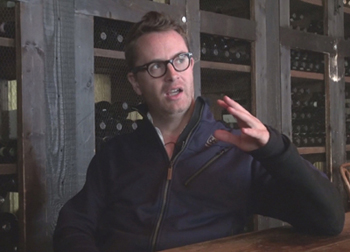 |
|
How did you become involved with DRIVE, and what was your attraction to the story and the characters? Nicolas Winding Refn: Well, DRIVE came about for me about two, a year and a half ago, when I got a call asking if would have dinner with Ryan Gosling in Los Angeles to talk about doing a movie together. Ryan and I had never met beforehand, so of course. Great opportunity to meet a great actor. I was in Los Angeles at the same time coincidentally to work with Harrison Ford on a film that wasn't really happening, it was going to crash. [THE DYING OF THE LIGHT, about a CIA agent going blind, written by Paul Schrader.] So I was open to new adventures. And I'd gotten the flu coming in on the airplane, so Harrison had gotten me these anti-flu drugs, which put the fever down but it also may me high as a kite. Which meant that when I went off and met Ryan in the evening I was stoned out of my mind. And they had sent over a script that he was interested in doing that Universal had developed called DRIVE, that I read in the morning - but I couldn't remember it. I was so stoned. So I got to the restaurant in the evening, I sat down and I was hard-put for us to have a real conversation. Because he was very respectable, polite, courteous, interested, really wanted to have a conversation about how we could do something, and talked a lot about my films. And I was not in the real mode of saying anything coherent because I was so out of it. I couldn't even look at him, I couldn't move my body. So it was an odd meeting to start a relationship on. And halfway through the dinner I asked him if he could take me home, drop my off at the hotel because I just needed to go back and lie down. And he was of course very nice - "Sure, if you need a ride home, I'll drop you off." To watch excerpts from this interview on CBSNews.com click on the video player below. So we get into the car and by then we hadn't really talked about anything about the story, because A, I couldn't remember the script; and B, we mostly talked about music essentially. So going back we're sitting in the car in silence with a notion of, well, did this amount to anything really? And he turns on the radio to break this awkward silence, because it's unbearable. And it's REO Speedwagon, "I Can't Fight This Feeling Anymore." And when you're stoned you do really stupid stuff, like crank up the music really, really loud in the car and then you start singing to it, which is really obnoxious and something you don't do. But when you're out of it you do things like that. And I then start to cry, because I think I was missing my wife, my kids, and Harrison Ford wouldn't die in my movie that I was going to be doing with him. So everything just came out of me. But what it did was that it gave me an emotional image, gave me an idea for a character. And I turned to Ryan for the first time really looking at him in the car as he's driving along the freeway which is a great way to suddenly see, to visualize this emotion that's been building up in me. And I said, "I know what we're going to do. We're going to make a movie about a man who drives around in a car at night listening to pop music because that's his emotional relief." And Ryan thought about it, and he goes, "Cool. Let's do it." 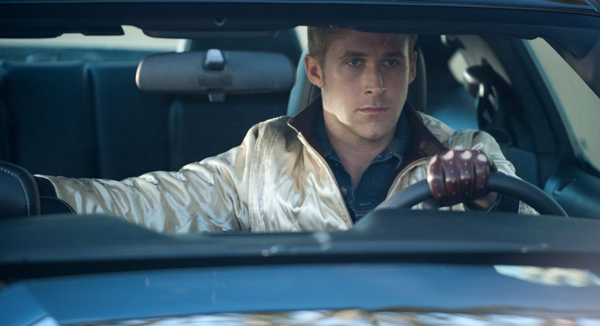 So the whole movie was born out of an emotion that Ryan and I shared in the car about a character's DNA - a man isolated, doesn't know why he's isolated, is full of emotions and needs to get relief and he uses pop music to do that. Afterwards when I went back and I saw what Universal had developed - and I could see why Ryan was interested in it, but I don't think it suited my kind of filmmaking as much. So Ryan and I would then start to change and to re-develop it . Hossein Amini was a wonderful writer, and us three really kind of "fetished it" out, into what became DRIVE. Hossein had been working on the movie for six years at Universal, he's been working on coming up with a good structure. But again, I'm a fetish filmmaker. I just make films based on what I want to see. So we spent a couple of months just, as I call, fetish-izing it into what I would like to see, and what Ryan and I felt would be interesting to do, and then we did it. What about the Los Angeles setting interested you, in terms of what you hadn't done if the film were shot or set in Europe? Refn: Nothing, because I didn't really know L.A., but I loved the IDEA of the movie in Los Angeles, because I loved the idea of a European filmmaker coming to Hollywood and living the mythology of what European filmmakers would be living like in the Twenties. You know, a great creative canvas to work with; a machine that's the best machine in the world, which is Hollywood in terms of making movies. So a lot of that was based on my own wanting to relive that. Almost like a concept performance art, to live the idea of Josef von Stroheim [Editor: likely meant Josef von Sternberg]. So, making it was essentially very easy. Of course, all the studios passed on it and it had to be financed independently, which is where I come from anyway, so I was in a way back to my familiar grounds when I made the film, but I made it in the right place, to have that experience.
The shooting script was 81 pages. The financiers and producers were maybe getting a little nervous, but they knew that Ryan and I were so in sync and we were so, you know, cocooned into one person that there was nothing else but to make the movie we were going to. Which took, you know, some courage, and I have to say that they backed us up 100 percent. Marc Platt and Adam Siegel were really there for me. Shooting in Los Angeles was just like any other city - problems, same things, unions same things, logistics, same things. But location-wise, L.A. was interesting because I wanted to do a fairy tale of L.A. and that was actually quite easy because there's something about L.A. that's very much reminiscent of the past. It seems like the city is still stuck in the Eighties. It was very easy to give that aura of the lighting and architecture of the city. And when I was done with the movie, we had a seven week shot, a lot of money to shoot with - again my own independent world similarities probably was one of the reasons I was able to make the movie I wanted to make, 100 percent, so when I left Los Angeles and was on my way to Cannes, I really felt that I've had one super-cool, flying-A, lovin'-it L.A. experience. It was probably the best experience I ever had making a movie, and I never thought that would happen in Los Angeles. I was always told they were going to fight you, they were going to destroy you, they were going to take everything away from you. But in my case it was the exact opposite. How do you see the character Ryan plays fitting in to other characters in your films in terms of violence - he is violent but he uses it for noble purposes. Refn: He is a hero. Though he IS a crook, he drives other crooks Refn: He's more like an existentialistic character, because he gets nothing out of being a crook. There is no exchange of money, there is nothing in it for him except this sense of movement. The concept of the Driver was also very much inspired by both James Sallis' book, of course, but also the Grimm's fairy tales, that here's this man of nobility who is essentially one person by day, another person by night. And his journey as the movie progresses is how he unites these two different personalities in a sense. I always say it's an allegory of a man becoming a superhero, because by the end of the film he goes from being a man in Irene's life that needs a man to fall in love with, the purity of love, and the illusion of love, and to protect that and what they have together, he then needs to go to the dark side and become the superhero that destroys everything that I a threat to her, in order to protect her. And that's very fairy tale-ish because I made Carey Mulligan's character so, so innocent in her being that she almost is out of one of the Grimm's Fairy Tales - like the little girl who ventures into the forest. Ryan's character, the driver, is like the knight who roams the wasteland in search of a mission, which is to protect and be a hero. Albert Brooks, Ron Perlman, the various villains, Bryan Cranston (the Driver's boss and "manager") is like the Helper of the Knight - they were all like archtypes designed for me, and that was something that Hossein Amini and I spent a lot of time on developing because I wanted to make it very clear. And that means that and then in the end it was a film about a man who transforms himself into a superhero.
BRONSON starts with a man that wants to be famous and all the wrong reasons and realizes art is an act of violence, and its moral is that you'll always be stuck in a cage. VALHALLA RISING is about a man who escapes from a cage to become a human being, as he evolves though mankind. And DRIVE is about a human being that turns into a superhero for all the right reasons. I'm sure that wasn't conscious when you were first developing the earlier films, but is that something you recognized as you were making DRIVE, looking back? Refn: I don't know, I wouldn't say that the transformation thing was conscious, but I think that I knew more about it than I would say going into making the movie. That was my own personal kind of catharsis as I was making it. Touching on the transformation theme, the films also explore how the environment impacts and transforms its characters. BRONSON, trapped in his environment because of his violence, finds art as a means of potential escape. And in VALHALLA, the main character One-Eye must use violence to survive and escape. But in DRIVE violence seems more interpersonal. The Driver isn't using violence to survive but to protect other people - it becomes a progressive choice. I think that I realized one of the things with DRIVE, it was very much about my relationship with my wife, essentially. The reason why Carey Mulligan got the role was because I was meeting a lot of great actresses for the part, people that could clearly do the job very well, but I couldn't connect with them for some reason. And it wasn't until Carey Mulligan basically called and asked if she could come and meet and talk about doing something together, that I realized what I was looking for.
You know, being a fetish filmmaker, you can't do anything except make films based on what you want to see. I don't always understand why I make it until much later. Certain things I do, certain things I don't, but for some reason I can always see a connection that leads back to my own evolution one way or another. Can you define "fetish filmmaker"? Is that the same as a genre filmmaker? Refn: No, a fetish filmmaker is somebody that makes films based purely on what they want to see, what arouses them. Certain people know exactly what that is, and will continue to emulate that. Then there are people including myself that doesn't really know WHY they want to see it, but for some reason it always just comes up when you have to think about what would I like to see. And I have to stop analyzing myself for that specific reason because I don't want to know WHY, because if I do then I will also find a way not to do it. And I believe art is best when it is all about the flow of emotions. Every movie I make there's always a link that goes back to how I am in my life at that moment, what am I going through. BRONSON was an autobiography, it was a movie about my own life. VALHALLA RISING was about what went through my mind when my first child was born - the idea of traveling into outer space through my mind must have been and I never got back. And DRIVE was in a way the first real love story that I've been working on and have done, essentially comes down to love. What will I do for my wife, Liv? I would succumb to this behavior 'cause this is who I really am. And of course all that subtext and what you do when you collaborate with other great artists that maybe have their own reasons for why they want to be part of what they do. But since filmmaking is a director's medium, he is the author of the material, essentially everything leads back to him. Are there elements in the film's characters that aren't in the original novel? Refn: No. Pretty much Hoss and I have been good at sticking to everything that was in James Sallis' fantastic book. The silence, and the sparseness are the things that really came from that. Of course in the book the mobsters were more conventional mobsters. The reason it's being labeled as the trilogy of transformation is that all the major characters undergo a transformation. In DRIVE, the minor characters also transform themselves. Hossein and me really stayed within the characters in James Sallis' universe but I would change them a little bit. The Albert Brooks character is a gangster that became a movie producer, and then goes back to being a gangster during the course of the movie - something he doesn't want to. Nino, the Ron Perlman character, is a man who was born a Jewish gangster and all his life wanted to be an Italian gangster. Carey Mulligan is a woman who may be in some kind of turmoil because her husband is in prison and she had to kind of cope with everything a woman needs in her life. She transforms herself into a new woman. And the Driver is transforming himself from a human being into a superhero. So transformation has been very much a part of BRONSON and VALHALLA RISING and DRIVE. DRIVE is where everything leads to, in a way. Looking back, you can see those two movies led to DRIVE being the way it is. And now I can really move on and start something else that would interest me. But in the end I'm just a fetish filmmaker. I'm not the best filmmaker in the world. There are a lot of better filmmakers than me. But in the kind of the films I make, I'm the best at.
Refn: When it came to casting the other characters, Hollywood gives you a list of names that they would like for you to use. It usually consists of names of people that played similar roles in other movies that were successful. And that didn't really interest me. And because my situation was very much like when Lee Marvin wanted John Boorman to do POINT BLANK, I had a lot of creative freedom because Ryan Gosing had chosen me because he's the superstar, to write the film with him. So he would protect me. He was MY hero, he was my real life hero! Ryan and I had a very telekinetic [telepathic] relationship and can now read each other's thoughts. If we're in a room I can read his thoughts and he can read my thoughts. We have an actually telekinetic relationship.. We're basically one person is two separate bodies. But I didn't want to do the list, I threw it away, because I wanted Albert Brooks. I'd never met him, I hadn't seen him for years, didn't know what had happened to him. But the IDEA of Albert Brooks intrigued me. But I had to meet him of course to see if it was going to work out. So he came to my house one morning - I had spoken to him before - told him a little bit about what I wanted him to do with the character. Because with good actors you should let them incorporate a little bit of themselves into the character. He was a powerhouse of emotions, and I realized it was going to work out - I mean, if he didn't kill somebody in the movie he was going to kill somebody in real life, so he HAD to play this role! And thank God he wanted it. Refn: I mean, I'm a child of cinema, I'm a cineaste, I grew up with many different kinds of films, and liking many different kinds of filmmakers. I don't ASPIRE to be anybody because I would never take the chance or even dare to do that 'cause I would never be able to do a lot of what these people do, and that's everything from Murnau to David Lynch to Lindsey Anderson to Seijun Suzuki to Kurosawa to Douglas Sirk to Louis Malle to Jean Renoir to Jean-Pierre Melville - you name them, Carol Reed, you know, John Ford, Howard Hawks, Francis Ford Coppola, Martin Scorsese, Kenneth Anger, Andy Milligan for that matter. Anything that obscure to major mainstream, from Steven Spielberg to Michael Bay! I can't make their movies. I can be inspired by them, and wanting to see them gives me thoughts, and I can steal from them when I make my own movies. But I'm a child of cinema, so I don't aspire to be anybody else. When I was young I maybe wanted to, but I realized I couldn't, and that I should just make films based on my fetish rather than what I thought would be a film like their films. So it was very important lesson to me, that I crashed and I had to start from scratch by completing the PUSHER Trilogy, by that time realizing that film to me was just something I wanted to see and I wanted the audience of one. Violence is certainly key to understanding or appreciating your characters. How important is violence to you as a storyteller? Refn: Well for me violence and art is the same thing. Art is an act of violence. It's meant to penetrate you, and be part of you, but it's not negative, it's not destructive. REAL violence is destructive, physical violence is destructive. War is destructive. And the DNA of violence and war is the same thing. The only difference is where war destroys, art inspires. So therefore, art is an act of violence. |
copyright 2011 by David Morgan
All rights reserved.







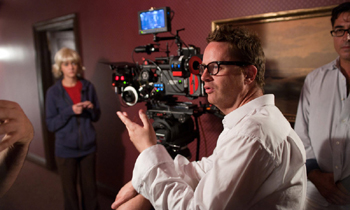 Shooting the movie was a great pleasure. . . . L.A. has the best crews in the world, the best technicians in the world. I had a wonderful house where Hossein Amini and me would live, he would live in my house while we were writing it.
Shooting the movie was a great pleasure. . . . L.A. has the best crews in the world, the best technicians in the world. I had a wonderful house where Hossein Amini and me would live, he would live in my house while we were writing it. 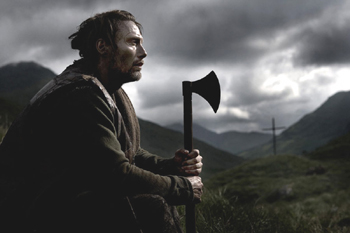 I mean, there is there's a French critics who said to me this is a trilogy of a man who goes through transformation, starting with BRONSON and going through VALHALLA RISING (left) and then DRIVE.
I mean, there is there's a French critics who said to me this is a trilogy of a man who goes through transformation, starting with BRONSON and going through VALHALLA RISING (left) and then DRIVE.
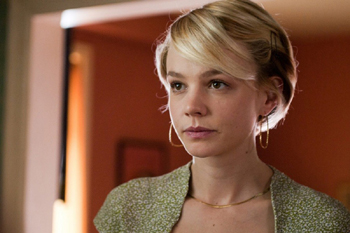 Because the moment Carey walked through the door, it wasn't that I fell in love but I knew I wanted to protect her, because she reminded me of my own wife in certain sensibilities. And then I realized that this whole film is basically about my relationship with my wife and what I would do to protect her.
Because the moment Carey walked through the door, it wasn't that I fell in love but I knew I wanted to protect her, because she reminded me of my own wife in certain sensibilities. And then I realized that this whole film is basically about my relationship with my wife and what I would do to protect her. 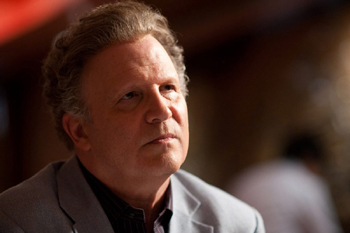 How did you come up with casting Albert Brooks?
How did you come up with casting Albert Brooks?